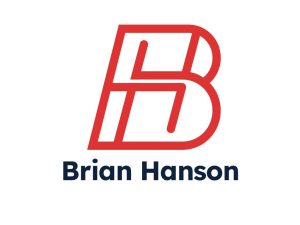In Part Two of our overview of the different parts of a local Internet marketing campaign, we’ll be taking a look at the website. The website is the keystone to your entire Internet marketing campaign. Just like the cash register is where the sale happens in a storefront, the website is where the conversion happens.
There are certain strategies you can do on-site that both attract traffic and drive conversions. These fall into two main categories: on-site search engine optimization and user interfacing. Again, sometimes these two disciplines overlap and other times they are at odds with each other.
Here’s a brief overview of the basics:
Keywords
Keywords (or key phrases) are the central hub of your search engine optimization efforts and the way you include them – both in terms of frequency, placement and formatting – matter big time. The two keys to keywords are research and application:
- Keyword research – The keywords you choose must be relevant to your business and heavily searched. “Attending to octogenarians in the residence” and “elderly home care” mean essentially the same thing, but the latter will get you infinitely more mileage, both with humans and spiders. For local businesses, the need to include location information arises, which introduces an entirely new dimension to keyword research as well.
- Using keywords – How many keywords do you choose? Where do you place them (in tags, in headers, as anchor text)? And how often should you use the keywords (i.e. keyword density)? There’s an art and science to building a website around keywords that affects both its indexability and its readability.
Copywriting
The challenge of writing for two audiences comes to a head for copywriters. Copywriters must juggle the twin responsibilities of creating content that is compelling to humans as well as robots. Philosophies differ among writers, SEOs and web developers, but from a sales perspective, making that human connection is absolutely vital. To achieve this, copywriters employ the age old art of sales and persuasion which has changed little since the birth of commerce. Except they have less words and less time than ever to make their case. Attention spans in the digital age have shrunken significantly and the “Back” button is always just a few pixels away.
But while copywriters must also make their content extremely hooky on a personal level, it must also be conscious of its other, arguably more important audience: the search engine spiders. This introduces another, meta-level set of requirements on the writer such as how many words he or she can use, which words to use and how to construct sentences, links and formatting. In this way, SEO copywriting is a bit like formal poetry – except instead of meeting the structural requirements of a sonnet or a limerick, the writer must neatly and efficiently pack their message into a format that is readable and relevant to search engines.
Web Design
Actually, web design is increasingly becoming an insufficient term for describing what goes into creating a conversion-friendly website. Perhaps web architecture is more apt. Websites must encompass:
- Aesthetic appeal – You’ve got 5 seconds to convince visitors that you’re a professional, reputable business. Looking good has never been so important.
- Technical integrity – Search engine spiders don’t see colors and videos and layouts the same way as we do. It’s more like the way Neo sees The Matrix – lines and lines of code. Ensuring that this invisible layer of your website is readable to search engine bots can make or break your search engine page ranking (SERP).
- Functionality – Your visitors want to get in touch or buy your product. Make it easy for them by designing intuitive navigation and a user-friendly interface. Otherwise, they’ll click away upon their first encounter with frustration.
The Overall Website Experience
When building a website, you must always be conscious of how users and search engines will view it and use it. How did they get here? What terms did they use to find you? What questions do they have and what is the best way to answer them? When constructing a website for your business, it’s all about crafting the right kind of experience for your two audiences. You want your site to be both search engine friendly and conversion friendly. An in-depth of how the search engine spiders work and how users interact with the web is key to creating landing pages, internal link structures, calls to action and other website aspects that meet the expectations of everyone that visits your website.
Creating an effective, conversion-friendly website is instrumental to your local Internet marketing campaign. But how do you get people to visit your website in the first place? Stay tuned – we’ll be going over the basics of off site Internet marketing in our next blog post.
